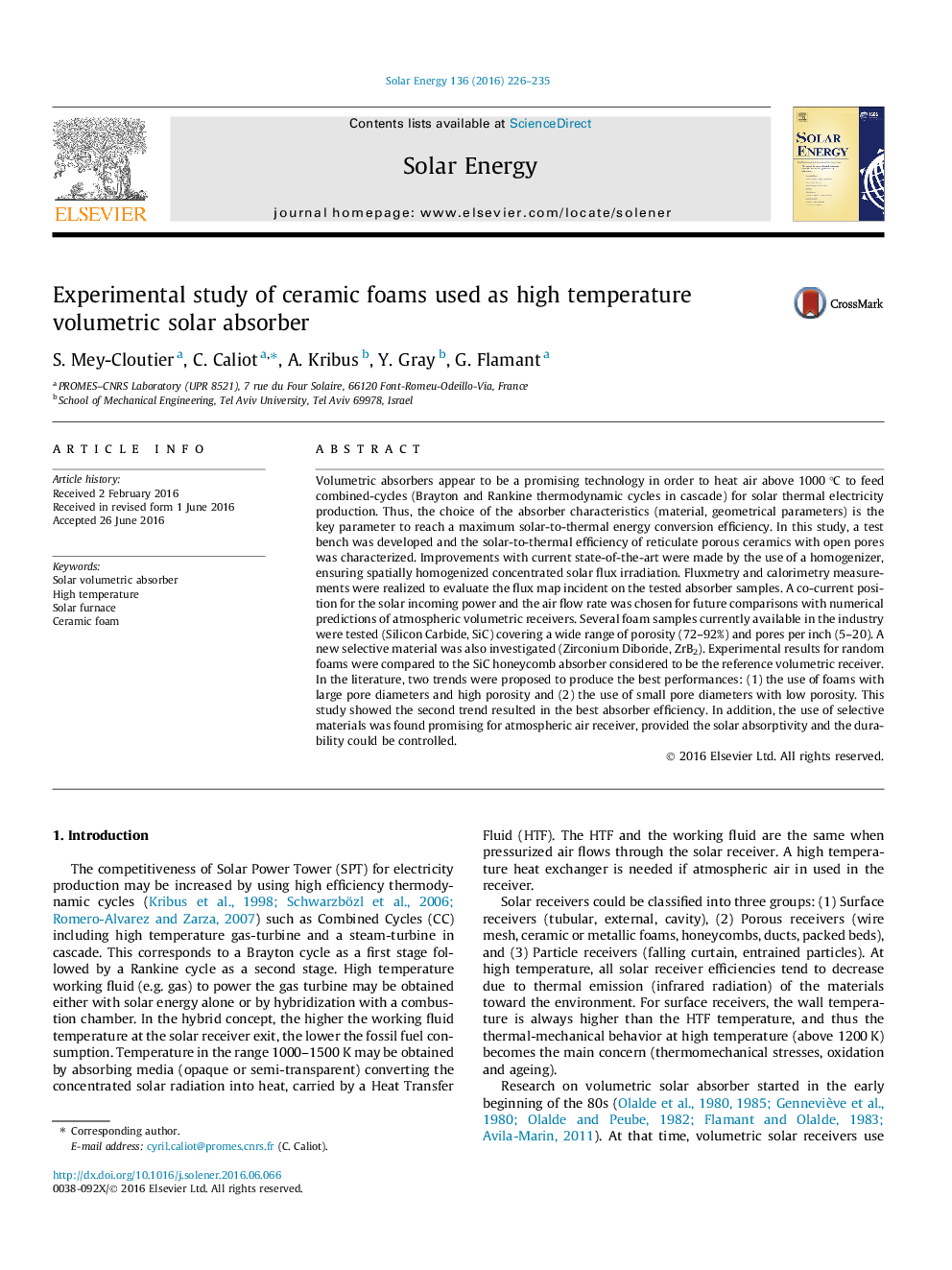| کد مقاله | کد نشریه | سال انتشار | مقاله انگلیسی | نسخه تمام متن |
|---|---|---|---|---|
| 7936402 | 1513082 | 2016 | 10 صفحه PDF | دانلود رایگان |
عنوان انگلیسی مقاله ISI
Experimental study of ceramic foams used as high temperature volumetric solar absorber
ترجمه فارسی عنوان
مطالعه تجربی فوم های سرامیکی به عنوان جذب خورشیدی ابعادی درجه حرارت بالا استفاده شده است
دانلود مقاله + سفارش ترجمه
دانلود مقاله ISI انگلیسی
رایگان برای ایرانیان
کلمات کلیدی
جذب حجمی خورشیدی، درجه حرارت بالا، کوره خورشیدی، فوم سرامیکی،
موضوعات مرتبط
مهندسی و علوم پایه
مهندسی انرژی
انرژی های تجدید پذیر، توسعه پایدار و محیط زیست
چکیده انگلیسی
Volumetric absorbers appear to be a promising technology in order to heat air above 1000 °C to feed combined-cycles (Brayton and Rankine thermodynamic cycles in cascade) for solar thermal electricity production. Thus, the choice of the absorber characteristics (material, geometrical parameters) is the key parameter to reach a maximum solar-to-thermal energy conversion efficiency. In this study, a test bench was developed and the solar-to-thermal efficiency of reticulate porous ceramics with open pores was characterized. Improvements with current state-of-the-art were made by the use of a homogenizer, ensuring spatially homogenized concentrated solar flux irradiation. Fluxmetry and calorimetry measurements were realized to evaluate the flux map incident on the tested absorber samples. A co-current position for the solar incoming power and the air flow rate was chosen for future comparisons with numerical predictions of atmospheric volumetric receivers. Several foam samples currently available in the industry were tested (Silicon Carbide, SiC) covering a wide range of porosity (72-92%) and pores per inch (5-20). A new selective material was also investigated (Zirconium Diboride, ZrB2). Experimental results for random foams were compared to the SiC honeycomb absorber considered to be the reference volumetric receiver. In the literature, two trends were proposed to produce the best performances: (1) the use of foams with large pore diameters and high porosity and (2) the use of small pore diameters with low porosity. This study showed the second trend resulted in the best absorber efficiency. In addition, the use of selective materials was found promising for atmospheric air receiver, provided the solar absorptivity and the durability could be controlled.
ناشر
Database: Elsevier - ScienceDirect (ساینس دایرکت)
Journal: Solar Energy - Volume 136, 15 October 2016, Pages 226-235
Journal: Solar Energy - Volume 136, 15 October 2016, Pages 226-235
نویسندگان
S. Mey-Cloutier, C. Caliot, A. Kribus, Y. Gray, G. Flamant,
